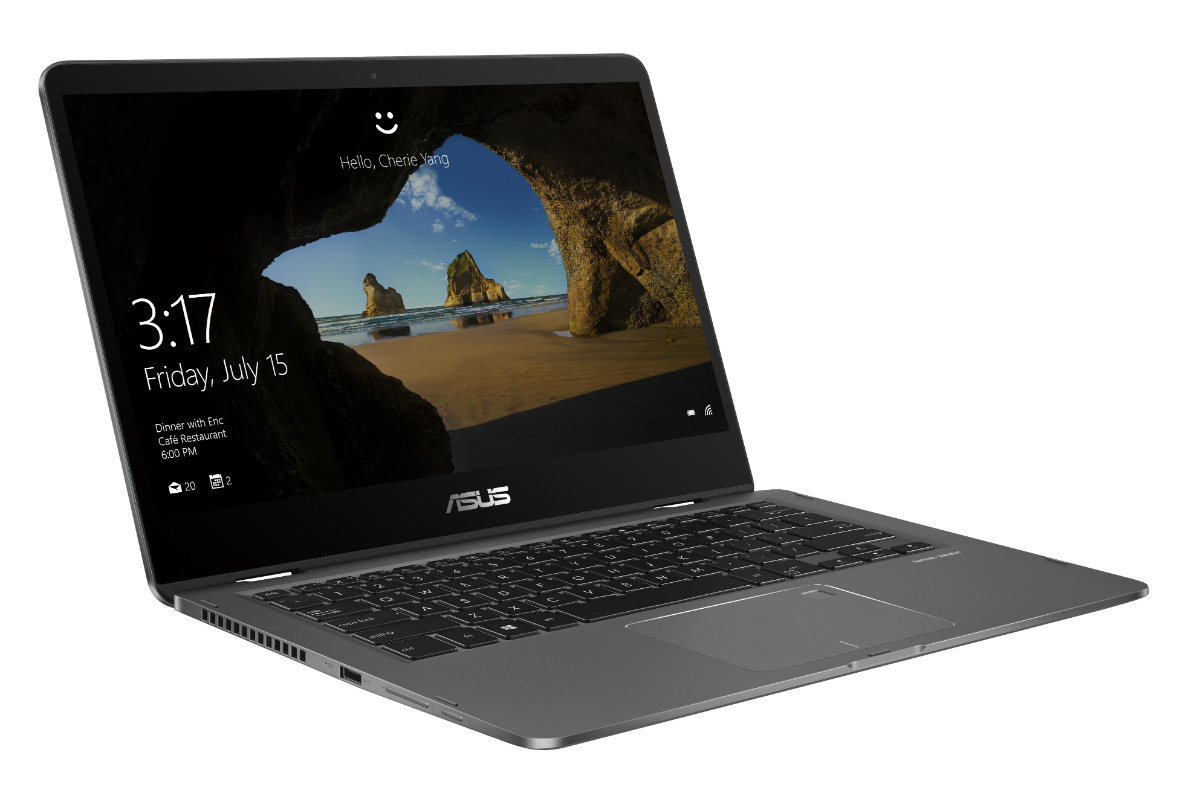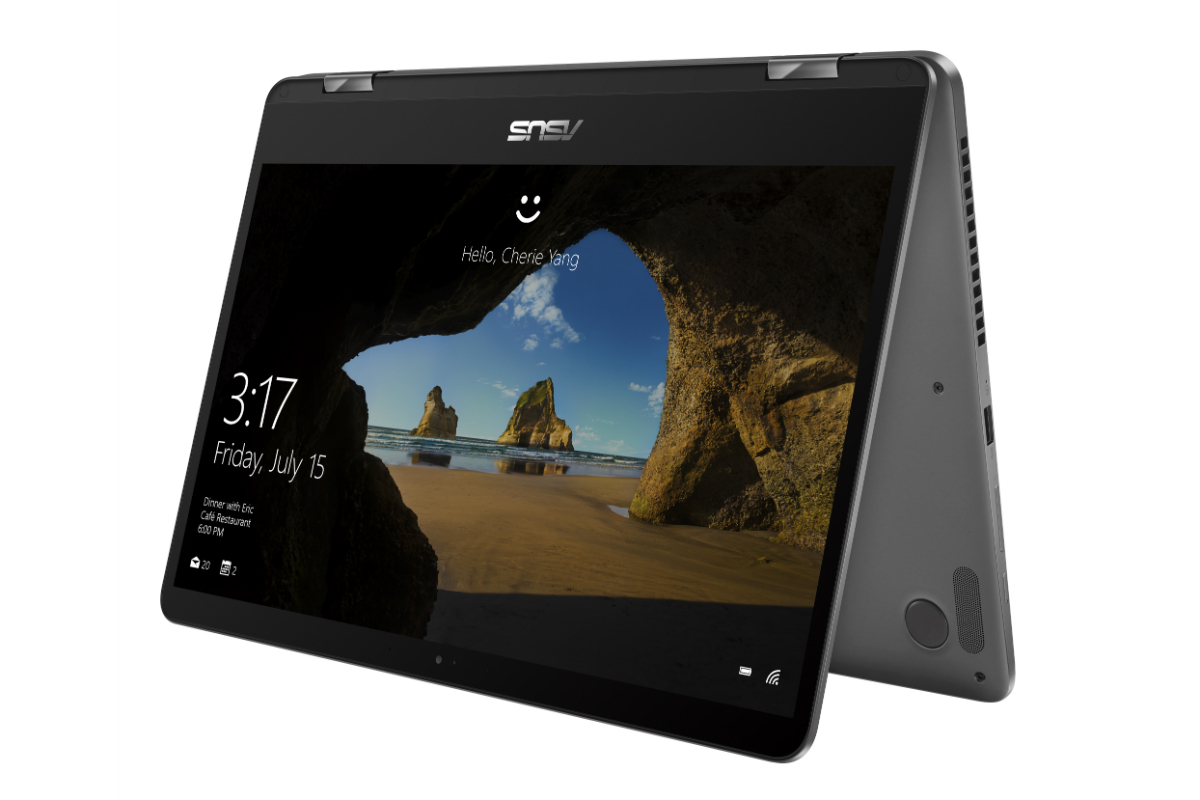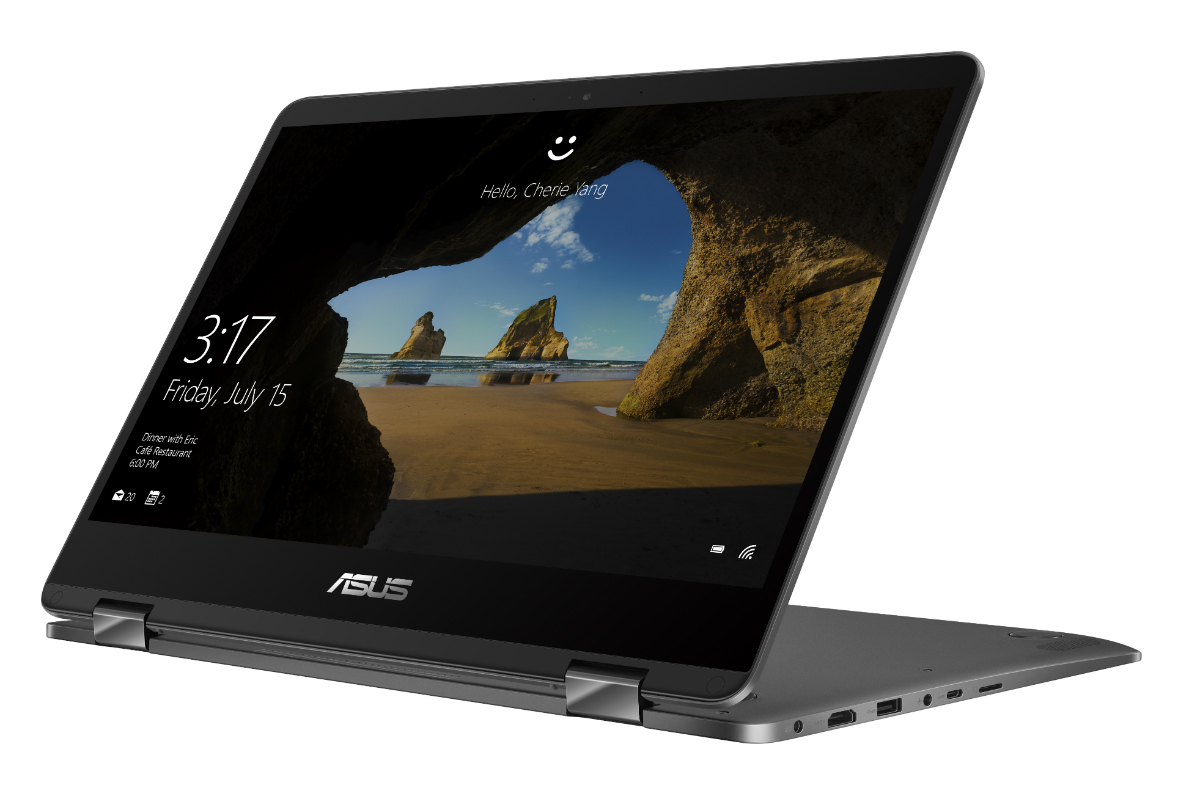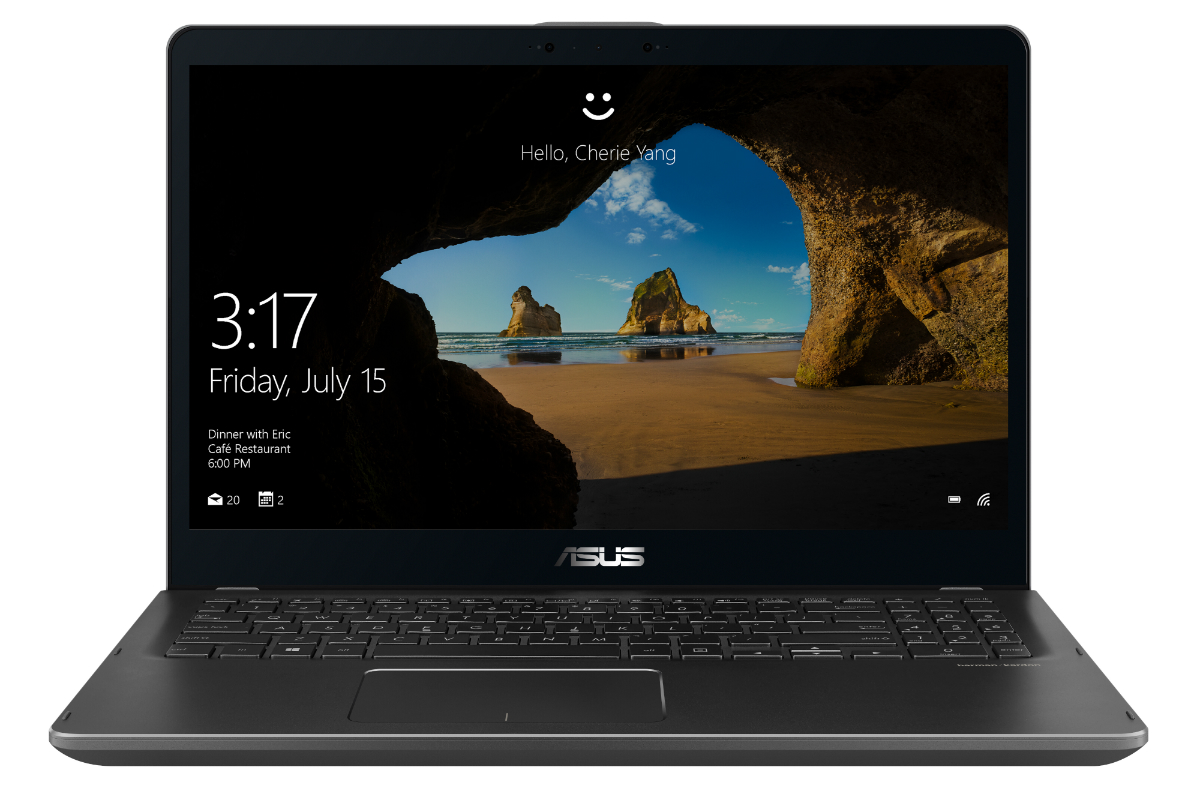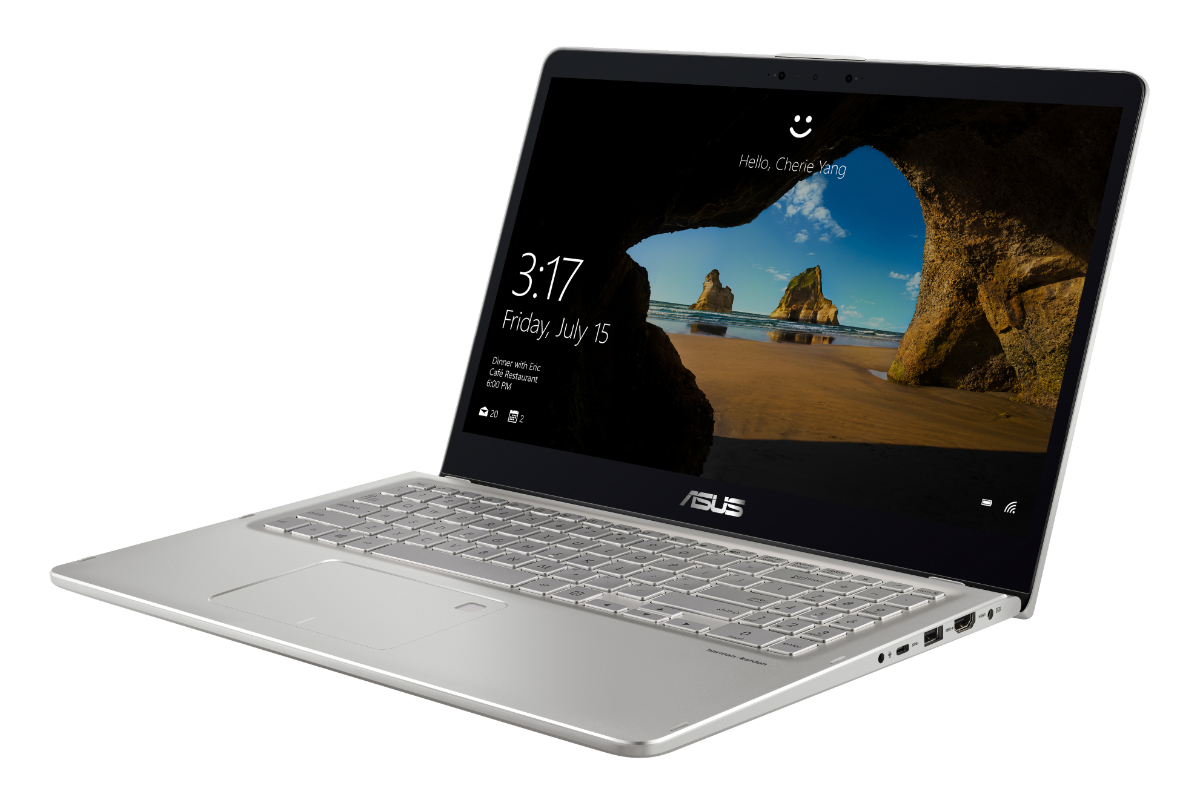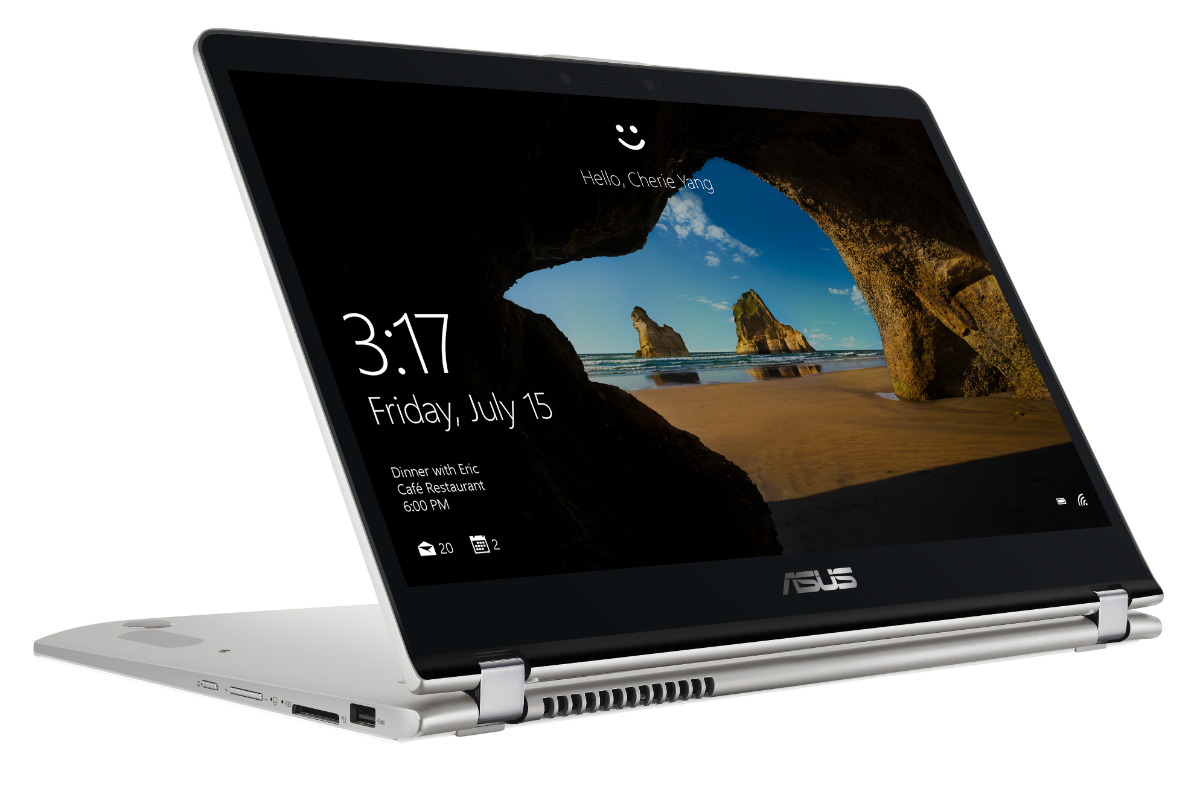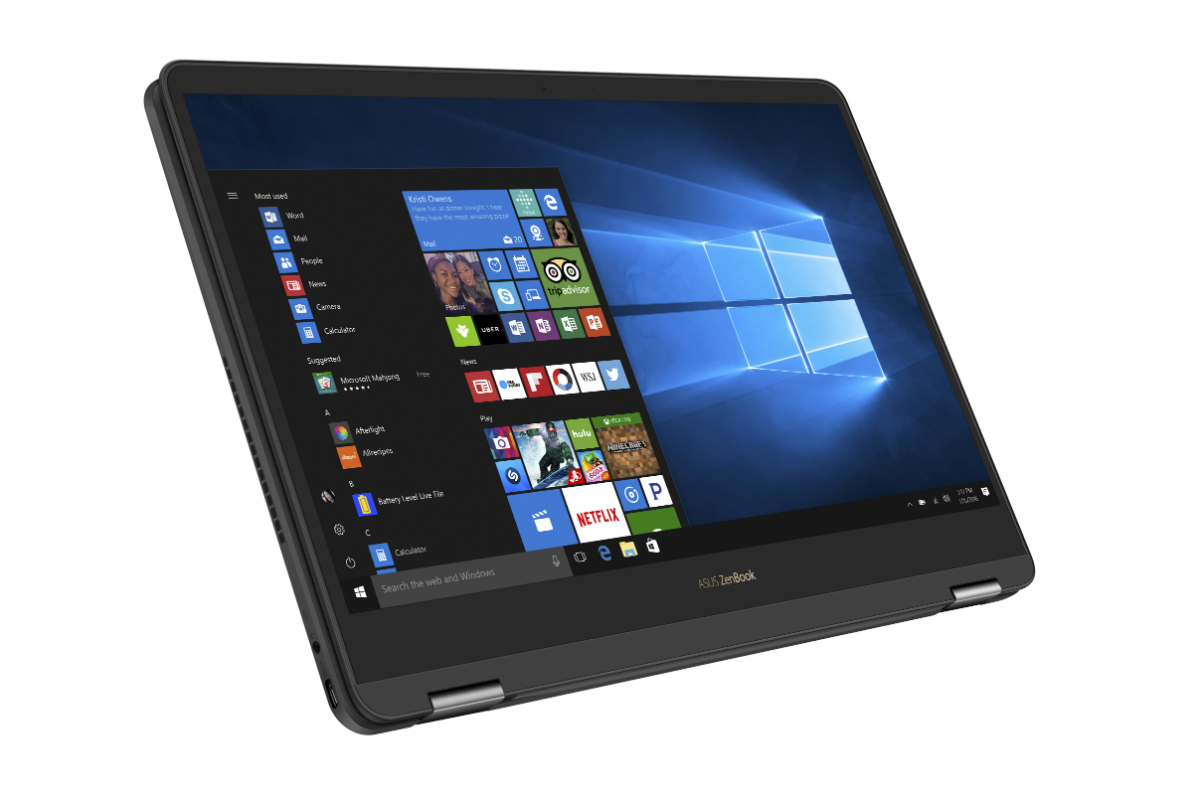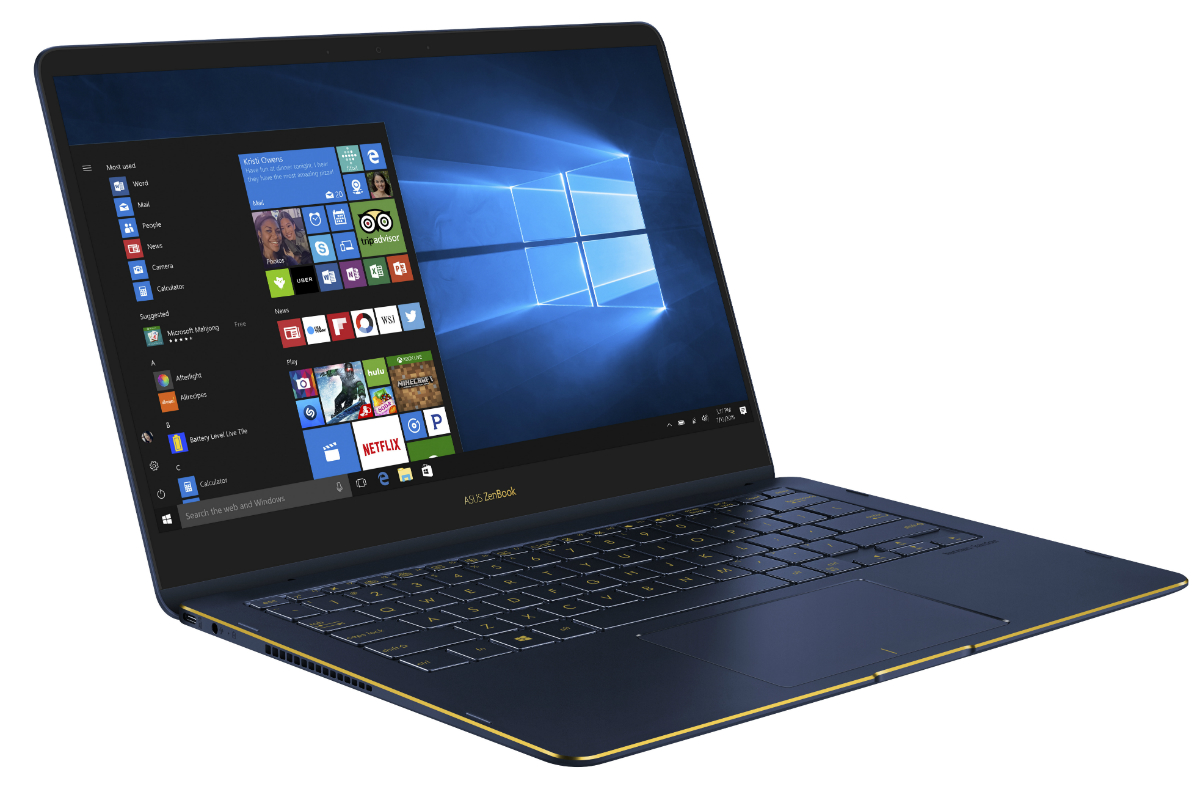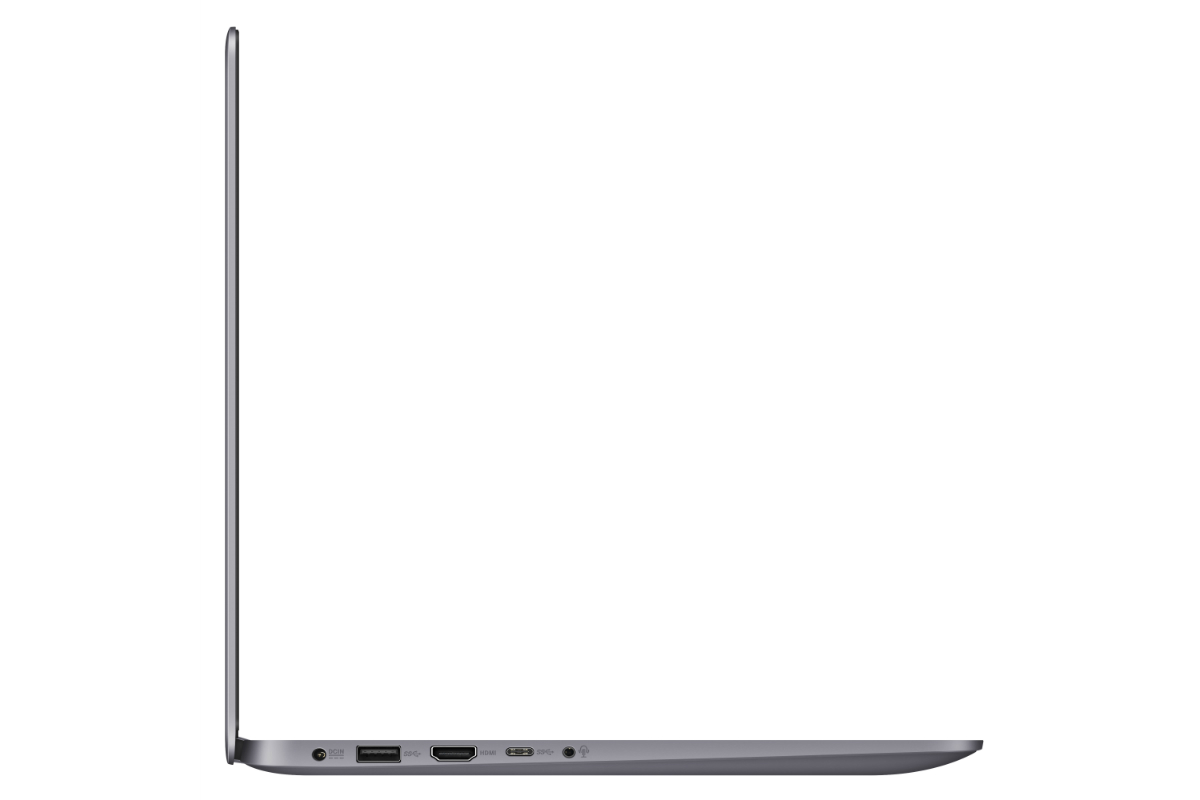
With its newest machines, Asus is focusing on squeezing more power into increasingly thin and light chassis for both traditional laptops like a refreshed ZenBook 13, and the new VivoBook S14, as well as 360-degree convertibles like the ZenBook Flip 14, Flip 15, and Flip S. In addition to utilizing Intel’s newest quad-core mobile processors, Asus is taking advantage of the Nvidia GeForce MX150, that in our testing provided performance in between the aging GeForce 940MX and the new GeForce GTX 1050.
ZenBook Flip 14
First up is the ZenBook Flip 14, or UX461, which Asus dubs the “world’s thinnest 2-in-1 laptop with high-performance discrete graphics.” This superlative refers to the machine’s thin 13.9 mm, 1.4 kg chassis that still manages to fit an Nvidia GeForce MX150 GPU inside for better lightweight gaming and enhanced creative productivity, for tasks like image and video editing. In addition to an 8th generation Intel Core i7 processor, 16GB of RAM and a 512GB PCIe solid-state drive (SSD) can be configured. Audio is provided by Harman Kardon, and the 14-inch NanoEdge Full HD (1,920 x 1,080) display uses minimal bezels to fit into a typical 13.3-inch chassis.
Asus is promising up to 13 hours of battery life with the ZenBook Flip 14. Windows Hello support is provided by a fingerprint sensor, and the machine will be available in two colors, Icicle Gold and Slate Grey.
ZenBook Flip 15
Next up is the ZenBook Flip 15, or UX561, which aims to take on larger, well-equipped convertible 2-in-1s like Lenovo’s Yoga 720 15-inch. Specifically, the 15.6-inch display, available in either Full HD or 4K UHD (3,840 x 2,160) resolutions, is driven by an Nvidia GeForce GTX 1050 GPU that should provide for solid mid-range gaming on the go. That’s coupled with an eighth-generation Intel Core i7 processor, up to 16GB of DDR4-2400 MHz
Asus is equipping the ZenBook Flip 15 with USB Type-C with Thunderbolt 3 ports for futuristic support of the highest-performance connectivity, and its usual Harmon Kardon-powered audio with a quad-speaker setup is on hand. The all-metal chassis will be available in Smokey Grey and Pure Silver color schemes.
ZenBook Flip S
Asus only recently introduced its ZenBook Flip S, or UX370, and already it’s refreshed the line with Intel’s eighth-generation Core processors, up to the Intel Core i7-8550U, bringing quad-core processing power to an extremely thin and light convertible 2-in-1 machine. The ZenBook Flip S is only 10.9 mm thick and weighs a scant 1.1 kg, a feat that’s made possible via a new liquid-crystal-polymer fan impeller that’s just 0.3 mm thick, and keeps the CPU’s thermal output under control. Complementing the new Intel Core processors is up to a 1TB PCIe SSD for fast storage performance, and if the new model conforms with the previous models up to 16GB of LPDDR3
As with the previous models, buyers will have a choice between 13.3-inch Full HD or
ZenBook 13
Another Asus machine getting a refresh is the ZenBook 13, or UX331, which also benefits from an upgrade to eighth-generation Intel Core i7 processor. The machine can be configured with up to 16GB of
The previous version, called the UX330UA, was one of our favorite laptops. We’re eager to see how 8th Gen Intel Core processors improve that already solid system.
VivoBook S14
The last Asus laptop of note is the VivoBook S14, which is 18.8 mm thin and weighs 1.3 kg, while offering the eighth-generation Intel Core i7-8550U processor, up to 16GB DDR4
Editors' Recommendations
- Intel’s 14th-gen Raptor Lake refresh might be a major disappointment
- Asus ZenBook S 13 Flip vs. HP Envy x360 13: it comes down to price
- Intel Raptor Lake CPUs: Everything we know about the 13th-gen processors
- MSI’s new laptops have 12th-gen Intel, 165Hz refresh rates
- Asus ZenBook 13 OLED vs. Dell XPS 13

